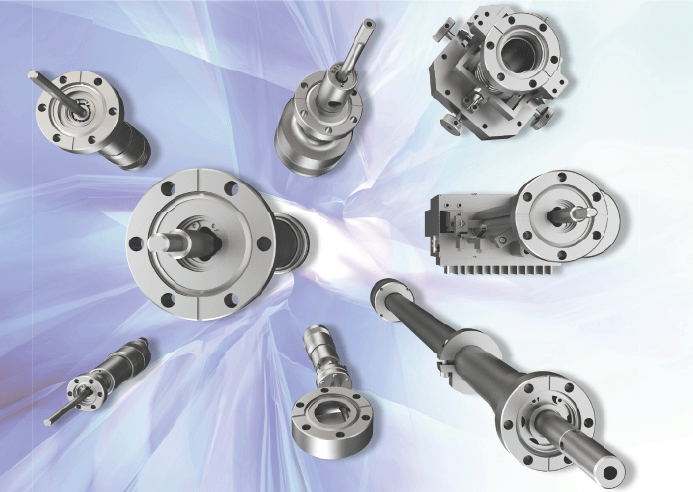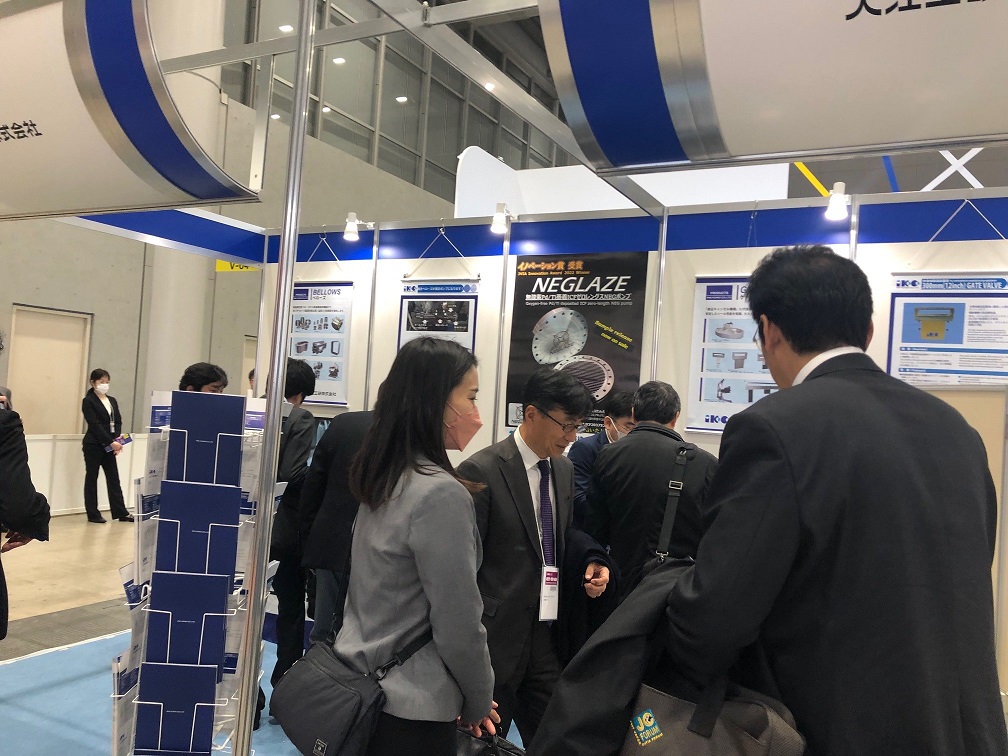
Problem
The development of high quality semiconductor manufacturing equipment requires a long-stroke insertion machine that is not included in standard products, but the company does not have the know-how to design one.
Company R needed a long-stroke insertion machine for the equipment it was designing. As there were no off-the-shelf feeders that met the specifications, the company initially thought of just buying the bellows and designing the feeder in-house. However, Company R had no long-stroke design expertise and was unable to achieve an optimum design.
Mr T from the R&D department recalls: 'The shaft deflects at long strokes.
Shaft deflection at long strokes has a significant effect on positioning accuracy. We also had to consider long strokes for the drive mechanism for the block structure of the bellows. We also wanted to use a mechanism that could extend and retract automatically, but we were never quite sure which design to use' (Mr T).
The standard machines we had introduced had very different shapes, so we could hardly use them as a reference. We had no idea how to solve the problem and research and development was not progressing well.
Problem areas
Need for an insertion machine with a shape not available in the standard range.
Tried to design the machine in-house, but lack of expertise made it difficult.
Solution
We received not only the bellows, but also a customised version of the insertion machine.
The accuracy of the research and the speed of development were improved by using an introduction machine with an optimised design through customisation.
The company was able to customise not only the bellows but also the insertion machine.
Mr T contacted several bellows manufacturers for information. One of them, Irie Kohken, replied that they could supply not only bellows but also customised products for the insertion machine.
We thought that Irie Kohken was a company that only manufactured bellows, but they told us that they could handle not only standardised products, but also specially designed installation machines to meet the customer's needs.
Mr T, who was beginning to feel that he could no longer continue to develop his own products by hand, decided to contact Irie Kohken.
The optimum design of the introduction machine was achieved, improving the accuracy of the research and the speed of development.
When the company was informed of the details of the specifications of the introduction machine, the reply was that Irie Engineering could make an introduction machine that met the requirements without any technical problems, and the decision was made to commission the machine.
IRIE KOKEN were able to produce a machine that met our requirements without any technical problems, and we decided to commission it. They also produced additional parts such as bearings, which solved the problem of the shaft bending due to the long stroke. I am glad we consulted with them rather than continuing with the design of the installed machine ourselves' (Mr T).
The adoption of an automatic extension/retraction mechanism has increased the accuracy of research and even improved the speed of development at Company R. In the future, Company R plans to consult Irie for improvements to other custom machines.

